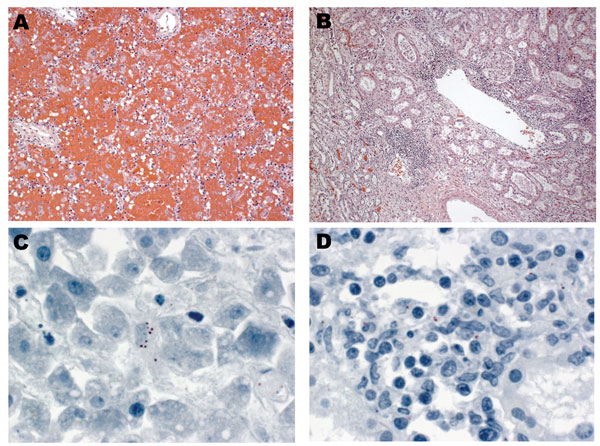Volume 17, Number 6—June 2011
Letter
Severe Leptospirosis Similar to Pandemic (H1N1) 2009, Florida and Missouri, USA
Figure

Figure. Photomicrographs of lung, liver, and kidney sections from patient 2 during study, Missouri and Florida, USA, 2009. Hematoxylin and eosin stain showed pulmonary hemorrhage (A) (original magnification ×10) and interstitial nephritis (B) (original magnification ×5), 2 characteristic pathologic findings of leptospirosis. Immunohistochemical testing showed scattered granular leptospiral antigens in liver (C) and kidney (D) (original magnification ×63).
1These authors contributed equally to this article.
Page created: August 03, 2011
Page updated: August 03, 2011
Page reviewed: August 03, 2011
The conclusions, findings, and opinions expressed by authors contributing to this journal do not necessarily reflect the official position of the U.S. Department of Health and Human Services, the Public Health Service, the Centers for Disease Control and Prevention, or the authors' affiliated institutions. Use of trade names is for identification only and does not imply endorsement by any of the groups named above.